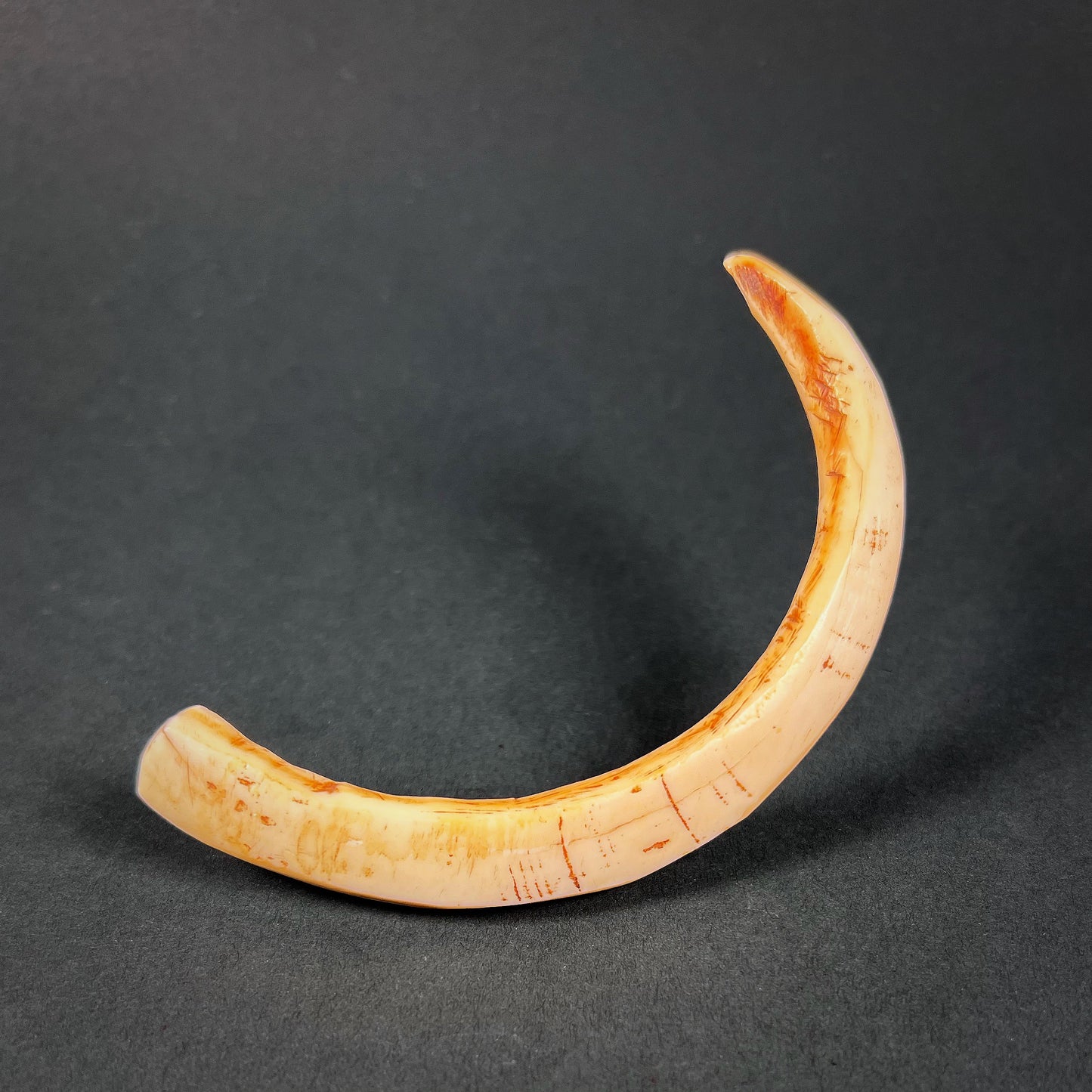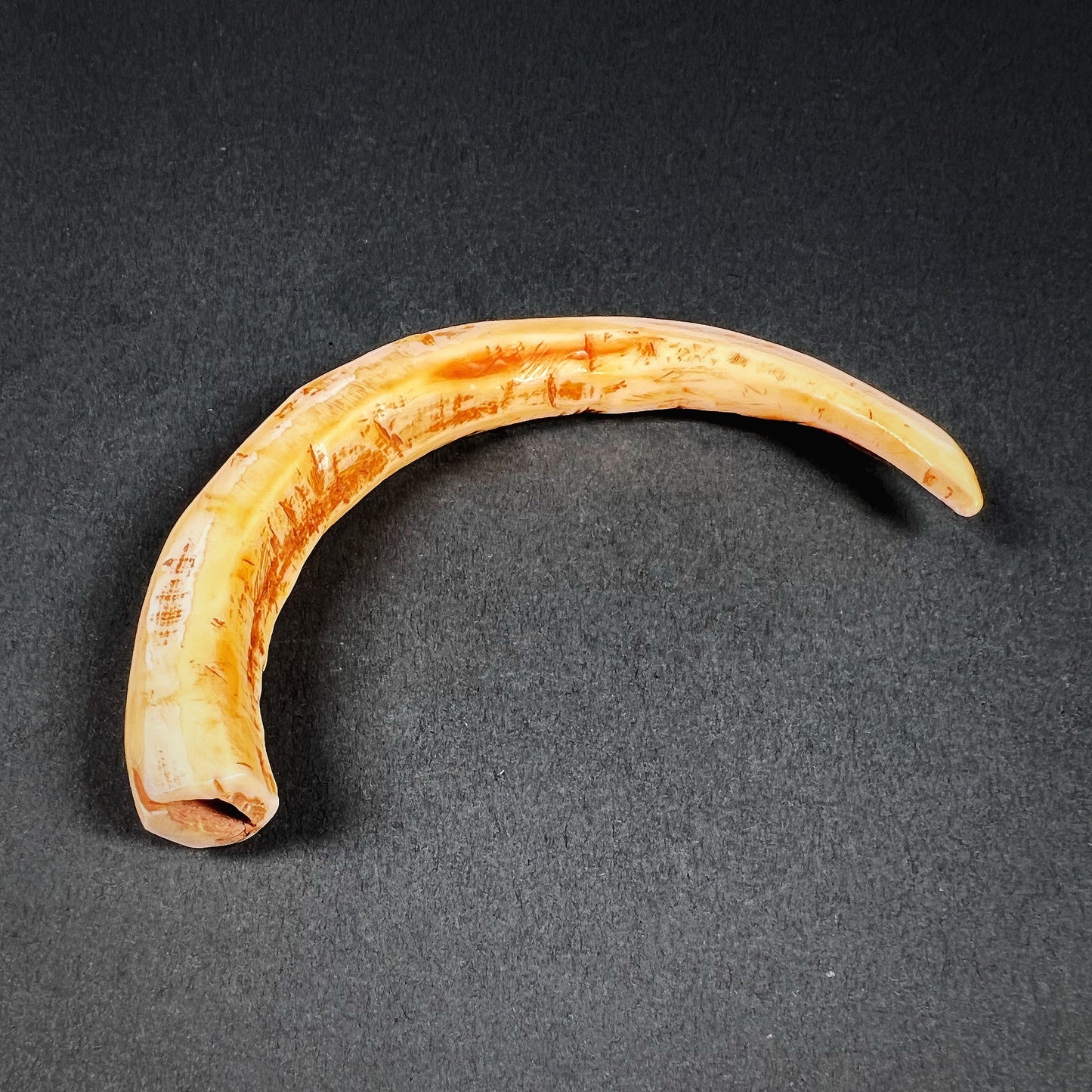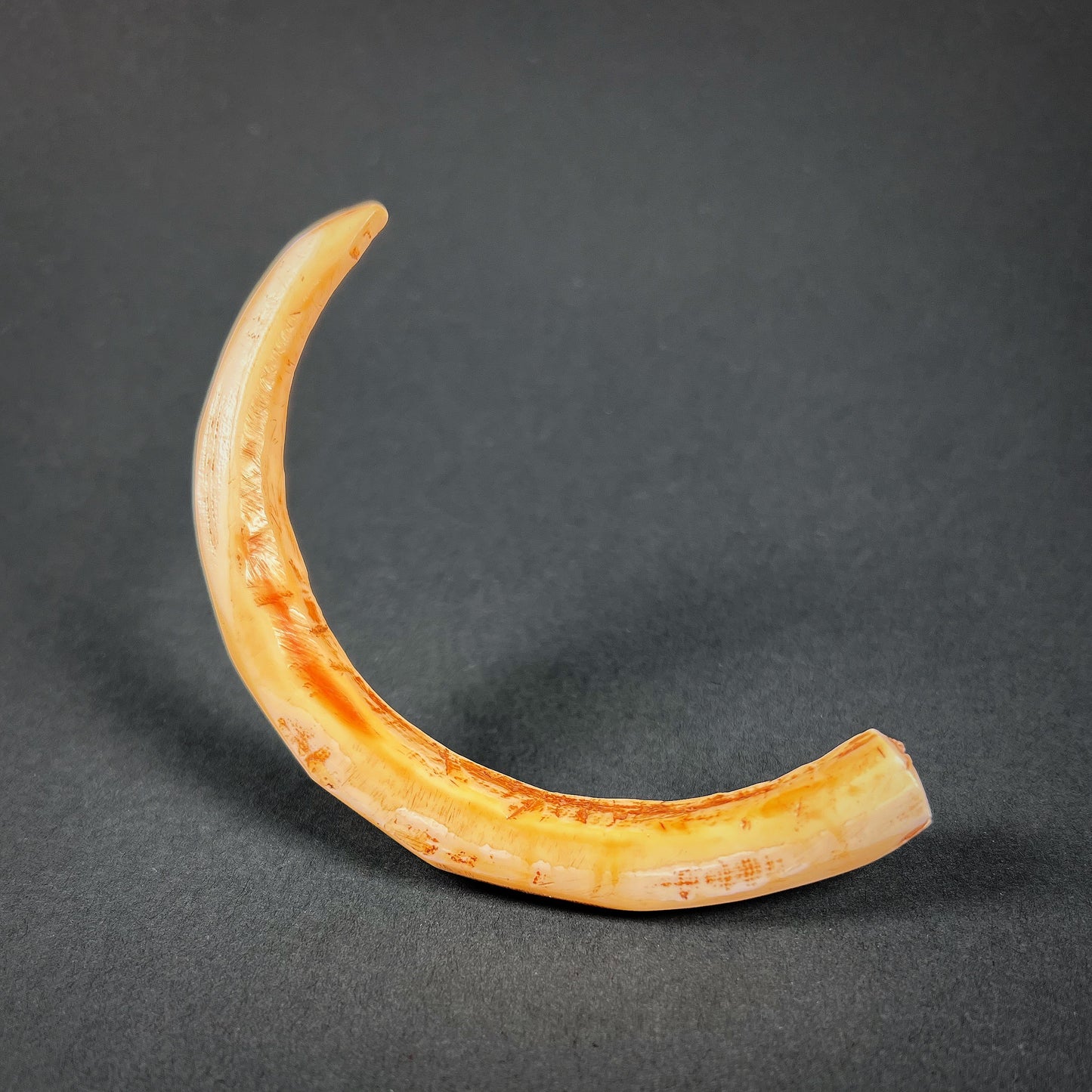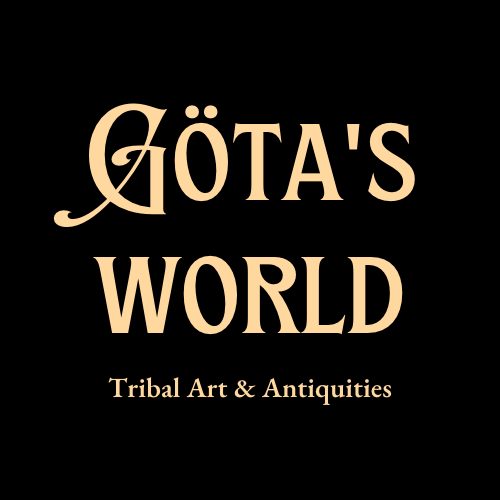Dani Boar Tusk Nose Ornament
Dani Boar Tusk Nose Ornament
Couldn't load pickup availability
Dani People, Early 20th Century, Bailem Valley, Irian Jaya (Papua), Indonesia
A captivating hand-carved and finely polished boar’s tusk nose ornament, once worn as both personal adornment and a potent symbol of wealth among the Dani. Originally paired with a second tusk and joined by a wooden dowel (now missing), such ornaments formed part of a man’s ceremonial attire and were also used in bride-price exchanges and barter payments—making them important markers of status and social identity.
The Dani of the central highlands—one of the most populous and culturally rich groups of Western New Guinea—maintained a traditional lifestyle of agriculture, hunting, and gathering until well into the mid-20th century. Their spiritual beliefs centred on local land and water spirits and the powerful agency of ancestral ghosts (mogat), thought to influence health, fortune, and communal wellbeing. Daily life and ritual practice were deeply interwoven, and adornments such as boar tusks, cowry-shell necklaces, feather ornaments, and rattan arm- and headbands played a central role in expressing rank, beauty, and clan affiliation.
Before the introduction of metal tools in the 1960s, the Dani relied on stone, bone, wood, pig tusk, and bamboo for all utilitarian and ceremonial objects. Personal decoration was equally traditional: men wore the iconic koteka, while women wore skirts of grass or coiled plant fibre. Wealth items—including polished stone blades, salt slabs, and noken/bilum bags—circulated in complex exchange systems that reinforced alliances and social cohesion.
This elegant boar tusk ornament is a fine example of Dani craftsmanship and aesthetics—an evocative remnant of a vibrant highlands culture renowned for its artistry, symbolism, and ceremonial life.
Good condition. Age-related wear, minor abrasions, and a fine, smooth patina from long handling. Size approx. 9,0cm x 1,0cm x 1,2cm.
Provenance: From a Dutch private collection; reportedly originally from the holdings of a now-closed ethnographic museum and foundation in the Netherlands.
For a similar example see:
Boar Tusk, The Peabody Museum of Archaeology & Ethnology, Harvard University, Accession Number: 07-45-70/72648 (https://collections.peabody.harvard.edu/objects/details/88553)
References and further reading:
Encyclopedia of World Cultures, Oceania, Karl Heider, edited Terence Hays, G.K.Hall & Company, 1991.
Wealth Items in the Western Highlands of West Papua, Anton Ploeg, Ethnology, Vol.43. No.4 (Autumn 2004), pp. 291-313.
Papua blood: An account of West Papua, Peter Bang, BoD, 16 Apr 2018.



-
Shipping
The shipment will be prepared in the course of 3-5 days and dispatched via Posti Group Oyj or purchased item(s) can be picked up from our shop during the store's opening hours (Tarkk’ampujankatu 4, 00140, Helsinki, Finland). Within the Finland, all items are shipped via Posti Group Oyj unless otherwise requested. We pack the items carefully and mainly in recycled materials because we want to save nature. You will receive the tracking number for your items by e-mail.
-
Returns
Returns and exchange will be accepted within fourteen days (14) of receipt at the purchaser’s cost to include freight and packaging. Items must be returned in the same condition as when they were shipped, and will not be accepted if damaged or altered in any way. Please inform us via email (info@gotanmaailma.fi) or by calling +358408408352 before sending. We do not accept returns more than 14 days after delivery.



